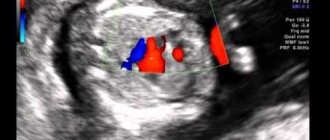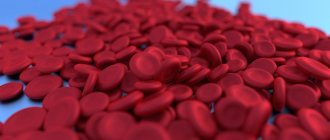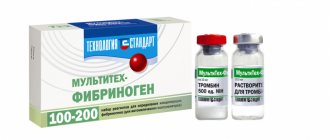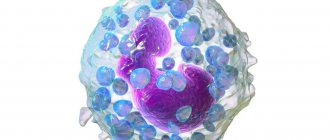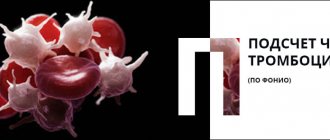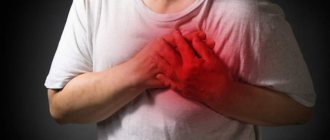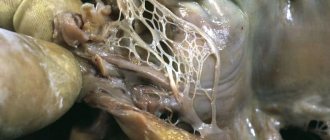Author Marina Lebedeva
10/28/2004 13:33 (Updated: 07/05/2021 13:58)
Health
Hemoglobin level in children is one of the most important indicators of health. How dangerous are deviations from the norm, what could be their cause and are there ways to correct the situation?
Prevalence in the world
Almost 25% of the population worldwide is affected by anemia, with the highest prevalence among preschool children (47.4% or 293 million). In schoolchildren, this condition is detected in 25.4% of cases (305 million). In 9 out of 10 preschool children, anemia is caused by iron deficiency in the body, and in one (or 10% of cases) it is a symptom of a pathology, such as leukemia. Source: WHO Global Database on Anaemia Geneva, World Health Organization, 2008
Standards for hemoglobin content in the blood for children under 18 years of age
| Child's age | Norm of hemoglobin content per unit of blood, g/l |
| 0-2 weeks | 125-220 |
| 0.5-1 month | 115-180 |
| 1-2 months | 90-130 |
| 2 months – 0.5 years | 95-140 |
| 0.5-1 year | 105-140 |
| From 1 to 5 years | 100-140 |
| From 5 to 12 years | 115-150 |
| More than 12 years | 115-160 |
How to find out your hemoglobin level?
It is quite easy to detect the hemoglobin level - you just need to donate blood for a general analysis. This test involves determining the hemoglobin concentration, which is measured in grams per liter. To obtain accurate information, blood should be donated before feeding, preferably in the morning. Within one and a half to two hours after feeding, hemoglobin decreases.
There are also indirect signs indicating low hemoglobin in children, in particular,
- pale skin
- and peeling.
The hemoglobin content in capillary blood is 10–20% higher than in venous blood. This must be taken into account when interpreting test results.
Causes of anemia in children
This diagnosis can be made for various reasons, including:
- Poor nutrition, iron deficiency.
For these reasons, the child’s body produces a small number of red blood cells. - Family history of sickle cell anemia.
This inherited disorder causes excessive destruction of red blood cells. - Large blood loss.
This happens due to injury, and in girls it can occur against the background of heavy menstrual bleeding. - The cause of anemia in newborns and infants
can be multiple pregnancies, a long and severe lack of iron in the body of the expectant mother, improper placental-uterine circulation, prematurity, labor hemorrhage, too late or premature ligation of the umbilical cord. - A group of postpartum factors
that cause anemia in early childhood: a poor diet, including mainly dairy products, early initiation of artificial feeding, iron deficiency in food, late introduction of complementary foods, lack of animal protein in the diet, rickets, frequent diseases. - Impaired absorption of iron by the intestines.
The reasons may be: dysbacteriosis, impaired intestinal absorption syndrome, food allergies, gastritis and other gastrointestinal diseases, some diseases of the pancreas and liver, large and small intestines. - Accelerated growth rates
and increased need for iron against the background of its loss. - Impaired iron metabolism
, which appears due to hormonal changes in the body. - Bleeding
– not only wound bleeding, but also nasal bleeding. - Physical inactivity
, prolonged stay in a stationary position, rare walks in the fresh air. - Hemolysis
, that is, the destruction of red blood cells, as well as a decrease in the production of red blood cells by the bone marrow. - Infections
, parasitic diseases, bacterial pathologies. - Malignant and benign tumors
in various parts of the body. - Exposure to radiation.
- Poisoning
with drugs and toxic substances. This also includes a long and unsupervised course of antibiotics, non-steroidal anti-inflammatory drugs, cytostatics, etc. - Deficiency of vitamins
, primarily
B12 and C
, necessary for the absorption of sufficient amounts of iron. Source: N.L. Prokoptseva, N.A. Ilyenkova Iron deficiency anemia in children: diagnosis, treatment and prevention // Siberian Medical Review, 2011
What is dangerous about low hemoglobin in a child?
Low hemoglobin in children is more common than high hemoglobin. According to WHO, a lack of hemoglobin - anemia - occurs in 47.4% of preschool children and 25.4% of schoolchildren.
Low hemoglobin in a child is a significant risk factor. It can lead to developmental delays, the development of heart and kidney diseases (they, along with the brain, are the first to suffer from oxygen starvation), disruption of the functioning of the immune system, skin diseases and edema. Without treatment, anemia can result in cardiomyopathy and heart failure, and these pathologies are deadly. With a critical decrease in hemoglobin levels, even a hypoxic coma is possible.
Signs of low hemoglobin in children are numerous, but nonspecific, in other words, they accompany not only anemia, but also many other diseases. In any case, parents should be alert to symptoms such as weakness, lethargy, tearfulness and drowsiness of the baby, decreased appetite, and pale skin. Older children may complain of dizziness and headaches. With low hemoglobin, cognitive functions - memory, ability to concentrate, and learning - are noticeably affected. Many cases of poor academic performance are not due to laziness, but to a lack of iron and low hemoglobin.
You need to take a hemoglobin test regularly, at least once every three months. It is not easy to determine the development of anemia by indirect signs; very often its symptoms are ignored or attributed to other causes.
A blood test for hemoglobin is necessary after any infectious diseases, sudden changes in diet (for example, after prescribing a diet when allergies or gastrointestinal diseases are detected) and any unexpected changes in the baby’s behavior. If your child has suddenly turned from an active and cheerful baby into a sleepyhead and a crybaby, you need to immediately take a referral for analysis.
Low hemoglobin often affects physical development - such children grow slowly and lag behind healthy peers in weight and height.
Sometimes tests show that the child’s hemoglobin is low, and this causes reasonable concern for parents. What can cause low hemoglobin in a child?
Causes of low hemoglobin in children
- Infectious diseases and parasitic lesions.
- Lack of iron in the mother’s diet during pregnancy and lactation or its lack in the child’s diet. Low hemoglobin is often observed in children of women following a vegan diet. Plant foods also contain iron, but it is less absorbed than what is present in animal products.
- Deficiency of vitamins necessary for iron to be absorbed into the blood - these include folic acid and vitamin C. Copper also plays an important role in the absorption of iron.
- Diseases of the digestive system in which iron absorption is impaired.
- Blood loss after injuries and operations, as well as after regular bleeding, such as nasal bleeding.
- Lack of physical activity and fresh air.
- Congenital pathologies, in particular thalassemia.
Types of anemia in children
There are several classifications of this disease.
Anemia occurs due to:
- physical (injuries, surgeries, etc.);
- food (poor diet);
- genetic (hereditary);
- infectious (secondary, appearing against the background of other diseases);
- radiation (due to exposure to radiation);
- arising from poisoning with chemicals and medications.
According to the type of disease, the following types are distinguished:
- associated with chronic or acute blood loss (posthemorrhagic);
- associated with impaired hematopoiesis: iron deficiency, or hypochromic, anemia in children, megaloblastic (if the child has a deficiency of vitamin B12 and folic acid), iron-saturated, dyserythropoietic, hypoplastic, aplastic;
- caused in children by the high destruction of erythrocytes and the process of blood destruction, which prevails over the process of hematopoiesis (hemolytic), - fermentopathy, membranopathy, autoimmune anemia, etc. Source: A.G. Rumyantsev Classification and diagnosis of anemia in children // Issues of modern pediatrics, 2011, v. 10, no. 1
The disease may be associated with insufficient production of red blood cells by the bone marrow
. This type of pathology includes the following subtypes:
- iron deficiency;
- protein deficiency;
- copper deficient;
- thalassemia;
- vitamin deficiency;
- Oral aciduria.
Anemia in children is also divided into degrees of severity based on the content of hemoglobin (Hb) in the blood: a child may have a mild form of the disease (110-90 g/l), moderate (90-70 g/l), severe (70-50 g/l). l), extra heavy (up to 50 g/l). The child may also have hidden anemia
, which resembles other forms of the disease in its manifestations, but the symptoms appear much less frequently.
How the analysis is performed
To determine the level of iron-containing protein, a clinical blood test will be required. The indicator is measured by analyzing Hb derivatives, which are formed as a result of oxidation and other chemical reactions. After this, the laboratory test is deciphered. There are also several innovative methods that can give a complete picture of a blood test for hemoglobin. Colorimetric, gasometric, and the use of specific reagents are progressive methods.
Attention! Sometimes the level of iron-containing protein has no diagnostic value. In this case, it will be necessary to determine its qualitative composition. For example, glycated hemoglobin.
To make the hemo protein indicator more reliable, simple preparation will be required before taking blood. The patient needs:
- the day before the test, give up sports and any junk food (fatty, sweet, spicy, smoked, salty, etc.);
- stop taking any medications 3-4 days in advance (with your doctor’s permission);
- stop smoking the day before the test;
- Blood is donated in the morning on an empty stomach; it is permissible to drink a small amount of clean water.
Such preparation will allow you to avoid atypical reactions of the body to food, allergens, medications, and physical activity.
Symptoms of anemia in children
Regardless of the type of anemia, the child may have the following signs of pathology
, especially when it lasts for a long time:
- pallor of the skin and mucous membranes;
- pigmentation, dryness, flaking of the skin;
- decreased appetite;
- changes in taste and smell;
- stomatitis, caries;
- various disturbances in the process of digestion and absorption of nutrients: nausea, heartburn, unstable stools, gastritis;
- emotional instability, irritability, excitability;
- developmental delay;
- lethargy, lethargy, apathy, fatigue;
- shortness of breath, hypotension, rapid heartbeat;
- weakness of the bladder sphincter (manifested by urinary incontinence);
- decreased immunity;
- exhaustion;
- dizziness;
- desire to consume unusual foods or completely inedible substances;
- swollen or sore tongue;
- delayed wound healing;
- sleep disorders;
- constipation or diarrhea;
- noise in ears.
Methods for diagnosing anemia in children
The main research method if you suspect that a child has anemia is laboratory tests
. Thus, in a clinical blood test, a decrease in hemoglobin levels is immediately visible - less than 110 g/l, as well as Er, serum iron CP, ferritin concentration, vitamin content, bilirubin, transferrin saturation with iron.
a bone marrow biopsy is needed to determine the exact cause of symptoms.
followed by histological examination.
Diagnostics allows you to determine the severity and form of anemia. Based on its results, the child may require consultation with highly specialized doctors (nephrologist, gastroenterologist, gynecologist, etc.), examination of the kidneys (ultrasound) and gastrointestinal tract organs (ultrasound of the abdominal cavity, endoscopy).
Causes and signs of increased hemoglobin levels
Various reasons can lead to an increase in the level of hemoglobin in a baby. The most common are:
- dehydration - both as a result of insufficient fluid intake and overheating, and as a result of diarrhea;
- congenital heart diseases, including pulmonary heart failure;
- oncological diseases;
- disturbances in the synthesis of the hormone erythropoietin;
- intestinal obstruction;
- blood diseases.
Sometimes a slightly elevated hemoglobin level can be considered normal. In people living at high altitudes, hemoglobin is slightly increased - this is a reaction to thin air. Also, hemoglobin may be slightly higher than normal in children who are very active in sports.
Children with elevated hemoglobin are usually lethargic and irritable, they suffer from drowsiness and fatigue, and the skin sometimes takes on a reddish tint.
Treatment of anemia in children
When anemia in children is not an independent disease, but a symptom of another pathology, all measures are aimed at treating the primary focus. In other cases, the first thing parents should do if a child has anemia is to adjust his diet. Not only a balanced diet is necessary, but also a proper eating regimen.
Older children are recommended to consume more beef, liver, seafood, greens, legumes, green vegetables and fruits, vegetable and fruit juices (freshly squeezed, not packaged).
If an infant who is being fed breast milk suffers from anemia, then the mother’s diet must first be adjusted - include not only iron-rich foods, but also iron supplements and multivitamin complexes. You should not delay the introduction of complementary foods - meat puree, egg yolk, fruit and vegetable juices, vegetables. When a child is bottle-fed, the pediatrician must prescribe a special milk formula with a high iron content.
Clinical recommendations for children with anemia also include additional sleep, sufficient walks in the fresh air, ultraviolet radiation, massage, and daily exercises.
For anemia, drug treatment is also carried out, including iron supplements, multivitamin complexes for an average period of 1.5-2.5 months or until clinical blood parameters in children are normalized. If the case is severe, the doctor may prescribe a blood transfusion (transfusion of red blood cells). Source: M.V. Erman Iron deficiency anemia in children // Health is the basis of human potential: problems and ways to solve them, 2013
Complications of the disease
If anemia exists in a child for a long time, its consequences may be: hair loss, highly brittle nails. A severe form of the pathology can lead to increased bleeding (hemorrhagic syndrome) and loss of consciousness.
Low hemoglobin - what to do
If you notice any of the symptoms described above in your child, contact your pediatrician. He will examine the child, listen to heart sounds, and give a referral for a general and biochemical blood test, which can confirm a reduced hemoglobin level. After the doctor has diagnosed anemia and identified its cause, the child is prescribed treatment and diet.
Depending on the cause of anemia, the doctor prescribes different treatments. For example, in case of deficiency anemia (when the body does not receive enough nutrients), medications are prescribed to compensate for the deficiency: B vitamins or iron supplements. For B12-deficiency anemia, the doctor prescribes vitamin B12 (cyanocobalamin), and in severe cases, a transfusion of red blood cells is indicated. For anemia of a chronic disease, iron supplements and recombinant erythropoietin are prescribed.
Often, anemic syndrome manifests itself in other diseases, for example, with kidney pathology, infections or disorders of the gastrointestinal tract. In this case, the doctor prescribes treatment for the underlying disease, which will restore the level of hemoglobin in the blood.
Prevention of anemia in young and older children
This disease can be prevented at the antenatal stage, that is, during the intrauterine development of the fetus. The expectant mother should eat well, spend enough time in the fresh air, and take vitamin and mineral complexes that necessarily contain iron. When a child is born, it is necessary to provide him with breastfeeding until about 1 year old, introduce complementary foods on time, and prevent early childhood diseases. Proper care and daily routine are also important. If a newborn is at risk for any disease, special treatment and preventive courses are needed.
For school-age children, diet is most important. It should contain as many green fruits and vegetables containing folic acid, grain products (especially buckwheat) as possible. Buckwheat is also recommended because it contains a lot of iron. Also, for prevention, you should take multivitamin complexes that contain folic acid in combination with all B vitamins.
Sources:
- WHO Global Database on Anaemia Geneva, World Health Organization, 2008.
- N.L. Prokoptseva, N.A. Ilyenkova. Iron deficiency anemia in children: diagnosis, treatment and prevention // Siberian Medical Review, 2011.
- A.G. Rumyantsev. Classification and diagnosis of anemia in children // Issues of modern pediatrics, 2011, vol. 10, no. 1.
- M.V. Erman. Iron deficiency anemia in children // Health is the basis of human potential: problems and ways to solve them, 2013.
Markova Daria Olegovna Clinic
Author of the article
Markova Daria Olegovna
Specialty: endocrinologist
Experience: 14 years
The information in this article is provided for reference purposes and does not replace advice from a qualified professional. Don't self-medicate! At the first signs of illness, you should consult a doctor.
Foods that increase hemoglobin
Food can increase hemoglobin levels in iron deficiency anemia. For other types (dyshematopoietic, posthemorrhagic, hemolytic, B12-deficiency anemia), specific treatment with drugs, blood transfusions or surgery is required.
List of products that increase hemoglobin:
- tahini halva contains more than 50 mg of iron per 100 g of product. Halva also contains vitamins E, B, phosphorus, zinc and calcium. Some of these substances improve the absorption of iron in the digestive tract;
- meat products: beef, liver, tongue, rabbit, veal. The iron content in these products ranges from 5 to 30 mg per 100 g of product;
- dried mushrooms: they contain up to 30 mg of iron per 100 g of finished product;
- seafood: squid, shrimp, clams, caviar, scallops. They contain up to 30 mg of iron per 100 g of product;
- wheat bran contains up to 15 mg of iron per 100 g of product;
- seaweed contains up to 12 mg of iron per 100 g of product;
- beets - 30 mg of microelement per 100 g of product;
- pomegranate - up to 30 mg of iron per 100 g of product.
It is recommended to add foods enriched with cobalt and manganese to your daily diet: squid, tuna, cod, catfish, flounder, pike, oat bran, rice flour. These products help the absorption of iron and accelerate the production of hemoglobin. It is also recommended to add medicinal herbs to food: stinging nettle, tripartite string, infusion of rose hips, strawberries, rowan tea, black currants.
Prices
| Name of service (price list incomplete) | Price |
| Online opinion of a pediatrician (SPECIAL) | 0 rub. |
| Appointment (examination, consultation) with a pediatrician, primary, therapeutic and diagnostic, outpatient | 1750 rub. |
| Consultation (interpretation) with analyzes from third parties | 2250 rub. |
| Prescription of treatment regimen (for up to 1 month) | 1800 rub. |
| Consultation with a candidate of medical sciences | 2500 rub. |
